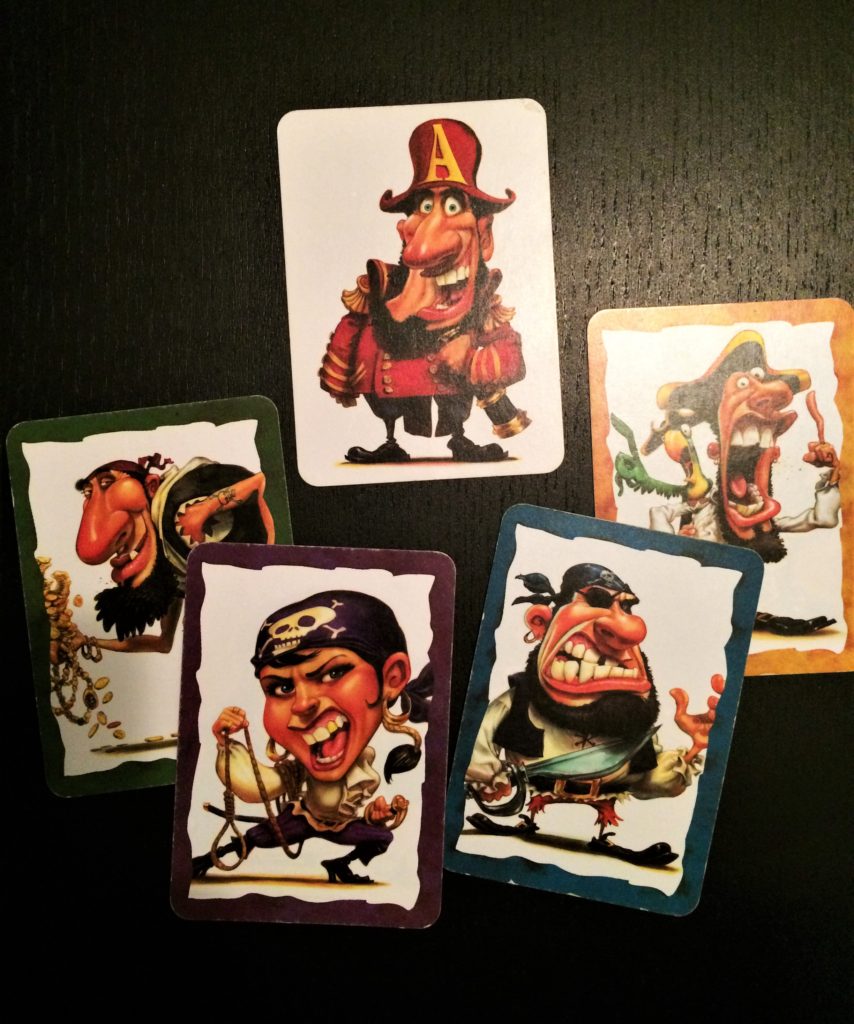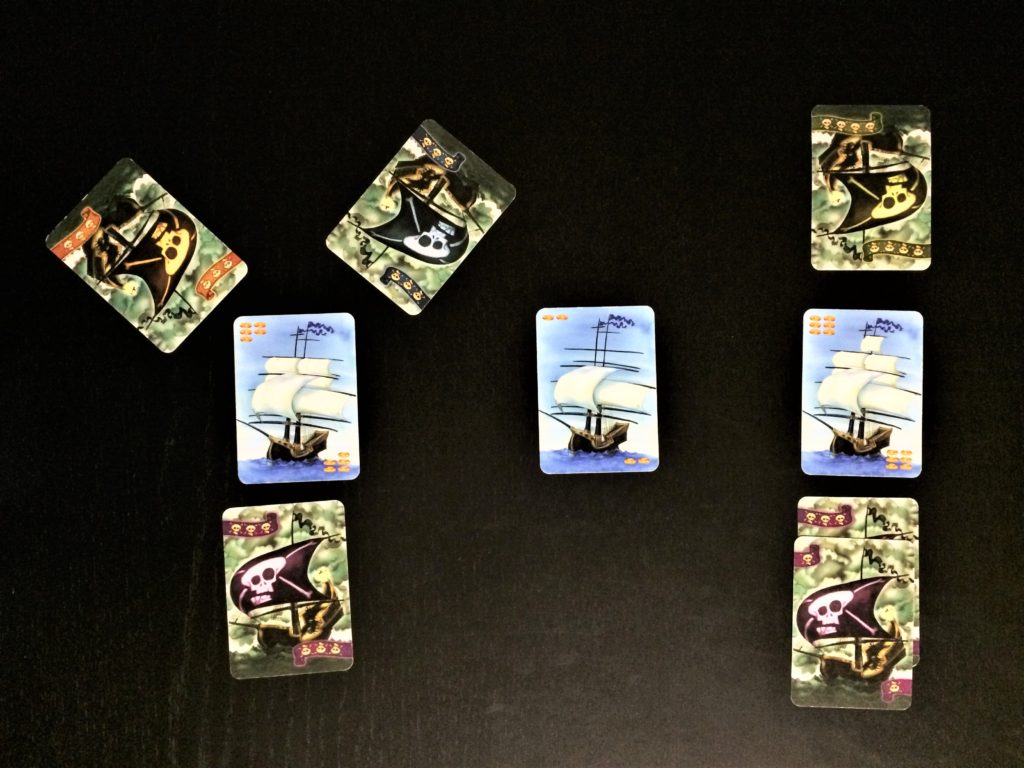Ahoy, Mateys!
Welcome to Loot, the rollicking card game where you play the role of both a dauntless merchant and a cutthroat pirate.
But beware! This game is addictive enough that you will most likely find yourself playing round after round.
I, for one, have played hours of this game and it is one of my favorite card games for families and larger groups. I’ll admit, I gravitate toward fast-paced games with lots of interaction.
Loot fits the bill with multiple battles happening simultaneously, quick turnover, and ever-changing opportunities.
Components of the Game
The cards consist of merchant ships with various cargos, pirate ships in four colors, four pirates corresponding to each color, and an admiral. The strength of the pirate ships is represented by skull and crossbones symbols.




Some of the cards are more detailed and artistic than others, but they all remain consistent with the playful pirate theme.
One downside is that some of the colors are not easily distinguishable. You have to play this game in good lighting or with young eyes.
But other than that, the overall aesthetic of the game is fun and unique.
Gameplay
The premise of the game is simple: sail your merchant ships to safety while attacking and looting other ships on the high seas.
It is essentially an auction game that is cloaked as a swashbuckling maritime adventure.
Ships laden with golden doubloons are sailed and then participants can enter a bidding war as they vie for the rights to capture the ship and its treasure. At the end of the game, the player with the most gold wins.
Each turn begins with an option to draw a card or go seafaring. The seafarers must then sail a merchant ship or enter into a battle (either to attack another player’s merchant ship or to protect their own).
Merchant ships are sailed by laying the card face up on the table. Once the merchant has been sailed, all of the other players have one opportunity to attack the merchant. If the round ends and no one has attacked, the player who sailed the merchant has won that ship and all of the gold represented on the card.
Unfortunately for the rich merchants, it’s usually not that simple. Other players can attack the merchants with pirate ships and the only option besides surrender is to defend the merchant ship with your own pirate fleet.
Unless, of course, you have the admiral.
The admiral and the four pirate cards add another layer to the battle possibilities since they have special privileges in overcoming opponents. The role of the admiral can only be used for defending your own merchant ship, but the special power of the pirate cards can be utilized both for both attacking and defensive power.




It’s possible for more than one player to be locked in battle over a single merchant ship. The only condition is that to attack a ship, you must play a different color pirate ship from the ships that are already attacking, and you must either meet or exceed the battle power of the strongest attacker.
At the end of the game, all of the players total up the number of gold coins on the ships they have won and subtract the coins of any ships left in their hand. The richest seafarer wins the game.
Overall
You might be surprised at how much strategy is involved in this game given the relatively limited variety of cards, simple rules, and random deck distribution.
Building a pirate fleet and being one step ahead of rivals takes thoughtfulness, and the decisions of risk bring out the personalities of the players.
As with most card games, it’s possible to draw a hand that severely handicaps your possibilities. That’s a potential downside, but then again, the rounds are over fast enough that the misery of an unfortunate hand is short-lived.
Who Will Like This Game
Families with young players or anyone who is tired of playing yet another round of “Go Fish” with your nieces and nephews. It’s not difficult to learn and you won’t spend 45 minutes trying to explain the rules to new players. And yet it’s a fun game for all ages that combines strategy and luck of the draw.
People who enjoyed fast-paced games where each turn is over quickly and the entire game is finished in about 25-30 minutes.
A group of 3 to 5 players. One advantage to this game is that it still works well when being played by more than four players. It claims that it can be played by anywhere from 2 to 8 players, but my husband and I have found that it is a rather odd game when the round only consists of one other player. In my opinion 3 to 5 players is the sweet spot.


Be the first to comment